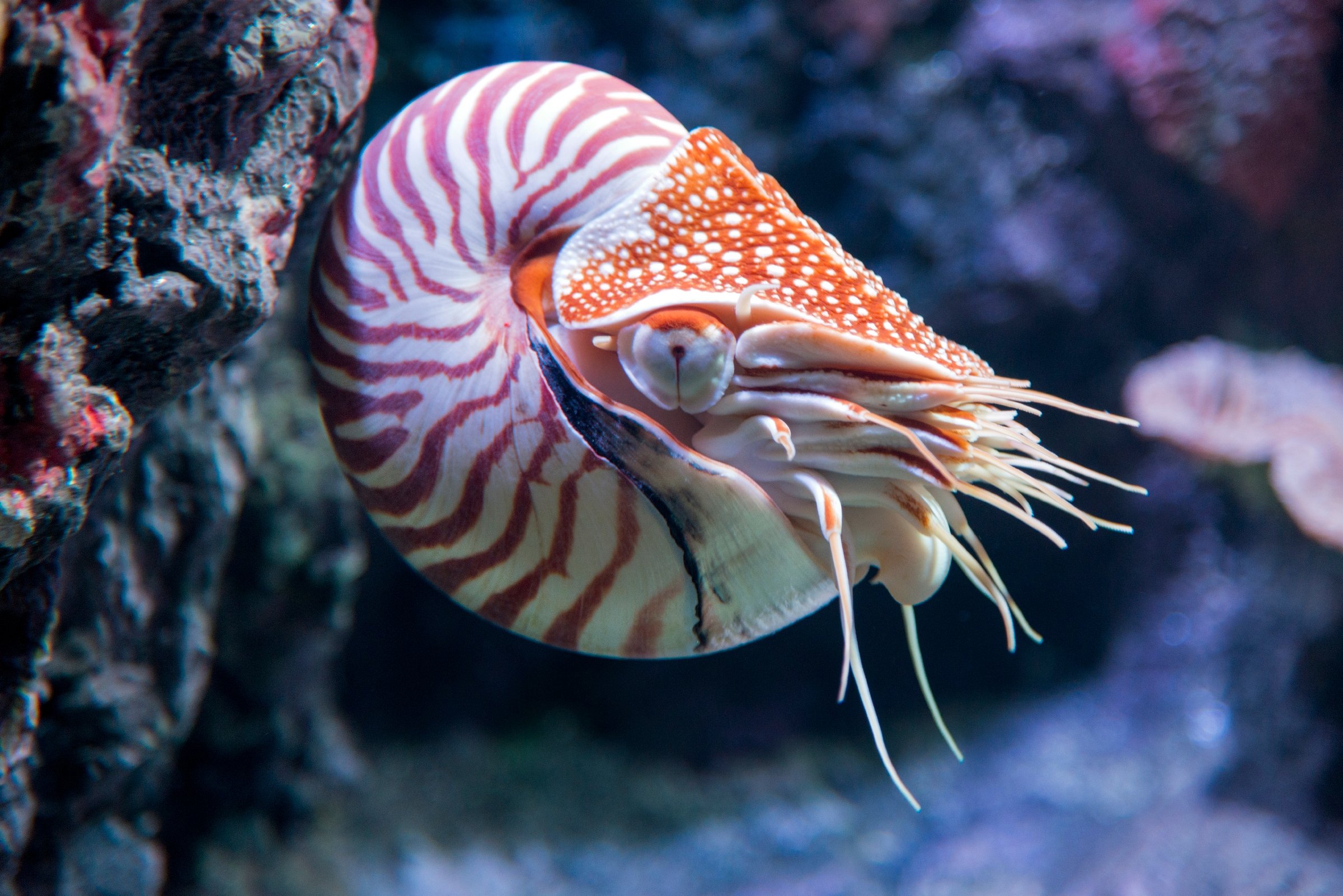
The Nautilus is a fascinating creature that has captured the imagination of scientists and nature enthusiasts alike. With its unique coiled shell and close resemblance to ancient marine creatures, the Nautilus holds a significant place in the world of marine biology. Found primarily in the Indo-Pacific region, these cephalopods have been around for millions of years, surviving the test of time.
In this article, we will explore 18 fascinating facts about Nautilus, shedding light on its anatomy, behavior, and evolutionary significance. From its efficient jet propulsion to its remarkable eyesight, the Nautilus possesses a range of intriguing characteristics that make it a truly remarkable creature. So, let’s dive into the depths of the ocean and discover the secrets of this ancient marine marvel.
Key Takeaways:
- Nautiluses are ancient marine creatures with a spiral shell, nocturnal habits, and slow growth. They play a vital role in marine ecosystems but are facing population decline due to overfishing and habitat degradation.
- Nautiluses have survived for over 500 million years with their unique shell, powerful bite, and ability to adjust buoyancy. They are found in the warm tropical waters of the Indo-Pacific and contribute to the balance of marine ecosystems.
The Nautilus is a marine mollusk.
The Nautilus is a cephalopod that belongs to the same family as the squid and octopus.
Nautiluses are the living fossils of the ocean.
These creatures have remained relatively unchanged for over 500 million years, making them fascinating examples of ancient marine life.
They have a unique shell.
The Nautilus shell is spiral-shaped and consists of a series of interconnected chambers. As the Nautilus grows, it constructs new chambers and moves forward into them.
Nautiluses can adjust their buoyancy.
By changing the gas-to-fluid ratio within their shell chambers, Nautiluses can control their depth in the water column.
They have poor vision.
Nautiluses have simple eyes and a limited ability to see color. They primarily rely on touch and smell to navigate their surroundings.
Nautiluses have a powerful bite.
Their strong beak-like jaws allow them to feed on a variety of prey, including fish, shrimp, and other small marine creatures.
They are nocturnal creatures.
Nautiluses are most active during the night, using their tentacles to search for food in the darkness of the ocean.
Nautiluses can live in great depths.
These creatures are known to inhabit depths of up to 2,000 feet, although they are more commonly found in shallower waters.
They have a slow growth rate.
Nautiluses grow at a very slow pace, with some individuals taking up to 15 years to reach maturity.
Nautilus populations are declining.
Due to factors such as overfishing and habitat degradation, Nautiluses are considered vulnerable and are facing a decline in their numbers.
They have an intricate mating ritual.
During mating, male Nautiluses display elaborate courtship behaviors, including extending their tentacles and performing intricate dance-like movements.
Nautiluses lay eggs.
After mating, the female Nautilus lays a cluster of eggs, which are attached to the walls of the shell chambers. She then guards and cares for the eggs until they hatch.
Nautiluses can survive for long periods without food.
These creatures have a slow metabolism and can endure extended periods of food scarcity.
They have an excellent sense of smell.
Nautiluses possess a highly developed olfactory system, allowing them to detect and locate prey even in low visibility conditions.
Nautiluses can withdraw completely into their shell.
When threatened, a Nautilus can retract all its tentacles and withdraw into the protective confines of its shell.
They have a limited lifespan.
Nautiluses typically live for around 20 years, although some individuals have been known to survive for more than 30 years.
Nautiluses are found in the Indo-Pacific region.
These creatures are predominantly found in the warm tropical waters of the Indo-Pacific, including the coasts of Australia, the Philippines, and Indonesia.
They play an important role in marine ecosystems.
Nautiluses contribute to the balance of marine ecosystems by serving as both predators and prey, and through their activities of scavenging and recycling nutrients.
The Nautilus is truly a remarkable creature, with its ancient lineage and unique characteristics. It reminds us of the incredible diversity and beauty of the marine world that we must work to protect.
Conclusion
In conclusion, the nautilus is a fascinating creature that has captivated the interest of scientists and marine enthusiasts alike. With its unique appearance and ancient lineage, the nautilus serves as a living fossil, providing valuable insights into the evolution of marine life. From its intricate shell to its remarkable hunting strategies, there is still so much to learn about this enigmatic cephalopod.As we unravel the mysteries surrounding the nautilus, we gain a deeper appreciation for the complexity and diversity of the animal kingdom. By studying and preserving these ancient creatures, we can better understand the delicate balance of our oceans and the importance of conservation efforts. The nautilus serves as a reminder of the wonders that exist beneath the waves and the need to protect and conserve our marine ecosystems for future generations.
FAQs
Q: What is the nautilus?
The nautilus is a marine mollusk that belongs to the cephalopod family. It is characterized by its spiral-shaped shell and tentacles.
Q: How big can a nautilus grow?
Nautiluses can vary in size, but on average, they reach lengths of 6 to 10 inches (15 to 25 centimeters). However, some larger species can grow up to 12 inches (30 centimeters) long.
Q: How long do nautiluses live?
Nautiluses have an impressive lifespan compared to other cephalopods. They can live up to 20 years in the wild, and some individuals have been known to live even longer in captivity.
Q: How do nautiluses hunt for food?
Nautiluses are opportunistic predators and feed on small fish, crustaceans, and carrion. They use their tentacles to capture prey and bring it towards their beak, where it is consumed.
Q: Are nautiluses endangered?
While nautiluses are not currently classified as endangered, some species are facing population declines due to habitat destruction and commercial harvesting for their shells. Conservation efforts are crucial to ensuring their long-term survival.
The enigmatic nautilus captivates with its ancient lineage and incredible adaptations. As you've learned about this remarkable creature, your curiosity may be piqued to explore more fascinating marine life. Ever wondered about the differences between cuttlefish and squid? Our article delves into the distinctions between these two intriguing cephalopods, shedding light on their unique characteristics and behaviors. Dive deeper into the world of marine biology and uncover the secrets of these extraordinary creatures.
Was this page helpful?
Our commitment to delivering trustworthy and engaging content is at the heart of what we do. Each fact on our site is contributed by real users like you, bringing a wealth of diverse insights and information. To ensure the highest standards of accuracy and reliability, our dedicated editors meticulously review each submission. This process guarantees that the facts we share are not only fascinating but also credible. Trust in our commitment to quality and authenticity as you explore and learn with us.


